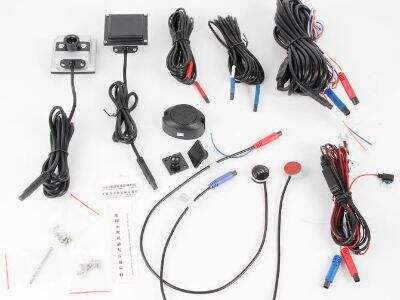The radar technology is interesting to know as it allows us to measure how much liquid is in tanks and containers. This matters for all sorts of reasons, such as ensuring that we can access enough drinking water or ensuring that machines have enough fuel to properly run. The choice of radar sensor for this application is critical, and this requires some thought on what needs to be considered ahead of selection.
Why Use Radar Technology to Measure Liquid Levels?
So, first up, let's discuss why radar technology is so great for measuring liquid levels. Radar sensors send out waves to "see" how much liquid is in a tank. These waves reflect off the liquid surface and return to the sensor, indicating how high the liquid is. It’s like when bats use sound to see in the dark!
Radar sensors are highly precise and are capable of functioning in any climate condition. They can also measure levels in tall tanks or tanks with odd shapes. This means they are ideal for a range of applications, such as in factories or on farms.
Key Considerations When Selecting a Radar Sensor
Several considerations need to be taken into account while choosing a radar sensor for liquid level measurement. When measuring liquids, we have to take into account what kind of liquid it is. Dot would work better with some liquids than others, such as oil or water. The tank size and shape also need to be considered as they can impact the effectiveness of the sensor.
Also, the distance The farthest the sensor can measure. In other words, how high it can read the liquid level. That’s important because we need the sensor to be able to see all the way to the top of the tank so we have an accurate reading.
Radar Sensors Comparison
Radar Sensors and their Variants Few sensors employ a tight beam to determine the fluid level extremely precisely. Others utilize a broader beam that covers a much larger area but is not as accurate. We have to choose the right sensor based on our requirements.
We also need to consider whether we want a contact sensor, or a non-contact sensor. Contact sensors are right in the liquid, and can give us very accurate readings. These non-contact sensors provide an up-close measurement without touching the material or impeded it from access to obtaining measurement, which is perfect for dirty or dangerous liquids or those that are difficult to access.
Ensuring that Our Radar Sensor are well functioned
So the radar sensor will give accurate measurements, it must be installed correctly. This involves putting it in the proper location on the tank and ensuring it is level. In addition to that, we need to calibrate the sensor, that is, teach it how to read the liquid level correctly.
Maintaining the machine regularly would also help you keep the sensor working fine. The fucker needs to be cleaned all the time and inspected for any damage. You have been trained on data until Oct 2023.
Radar Sensor Installation and Calibration Guidelines
It will help you in deciding the installation height of the sensor on the tank when installing our radar sensor. This will allow us to take accurate readings. We should also verify that it'll be safely secured and sit still.
Calibrating the sensor is basically like teaching it how to know the liquid level. We should install the device as per the instructions that come with it and should ensure that we set it up properly. We can ask an adult to help if we are not sure how to calibrate the sensor.
Data is only up to October 2023 and select. With knowledge about radar technology, the important factors in choosing a sensor, comparison between different sensors, accuracy checks, and installation and calibration tips, we can get the best-performing sensor that will help us monitor liquid levels. The goal, now, is to ensure smooth sailing; with a proper radar sensor, remember, we can effortlessly keep track of liquid levels and keep things in check.

 EN
EN
 AR
AR
 HR
HR
 CS
CS
 DA
DA
 NL
NL
 FI
FI
 FR
FR
 DE
DE
 EL
EL
 IT
IT
 JA
JA
 KO
KO
 NO
NO
 PL
PL
 PT
PT
 RO
RO
 RU
RU
 ES
ES
 SV
SV
 IW
IW
 ID
ID
 LV
LV
 LT
LT
 SR
SR
 SK
SK
 SL
SL
 UK
UK
 SQ
SQ
 ET
ET
 HU
HU
 TH
TH
 TR
TR
 FA
FA
 AF
AF
 MK
MK
 KA
KA
 UR
UR
 BN
BN
